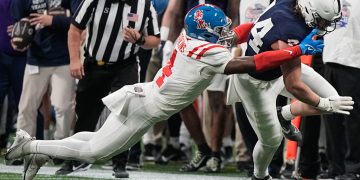The University of Mississippi is in an identity crisis. At times, this crisis seems to have permeated every inch of our space and each one of our people, its instances ranging from the trivial to the profound. Our newest on-field mascot is enjoyed by some and suffered by others. We wonder if our buildings’ racist namesakes should be contextualized or abandoned altogether. Our campus attracts Neo-Confederates and contemporary civil rights activists alike. We ask if our teams should be called the Rebels, if our school should be called Ole Miss. The University of Mississippi is at a turning point, and it’s time that we have a rigorous conversation about the identity our community should seek to cultivate going forward.
This identity crisis came to a head this year as the university’s governing bodies voted to remove the Confederate monument from the Circle. Many people — myself included — saw this as a necessary and overdue step in an ongoing effort to confront both our past and our present. But as we continue to dismantle our legacy of white supremacy, critics have worried that we will destroy our identity in the process. Such fears are depressingly poignant.
Racism is and has always been a part of our nation, our state and our campus to such a degree that in the act of tearing it away, we might also tear up ourselves. This concern has been subliminally present in every moment of progress that our community has made so far. When we retired a mascot, brutal but loved by many, this concern was present. When we — the state’s flagship university — took down the state flag, this concern was present. When we decided to relocate a historic but hateful statue from the center of our everyday landscape, this concern was present.
To be clear, we made the right decision in those moments, and I hope that we make the right decisions in the moments that are to come. The vestiges and residues of our terrorizing past should not be allowed to terrorize members of our community today. I understand the anxiety that comes with knowing that the university we attend, the one many of our parents went to and the one some of our children will go to are all three very different places. The anxiety that comes with letting go of who we are is strong, but it should not stop us from realizing who we are to become.
This is the crux of the University of Mississippi’s identity crisis. We are spending great effort deciding who we are not, but spending little effort deciding who we want to be. And so our discussions of what we are moving away from must be coupled with discussions of what we are moving toward.
Relocating the statue is merely symbolic, but — as Ta-Nehisi Coates once wrote — there is nothing “mere” about symbols. And so we must now ask ourselves: What — if anything — should go in its place? Maybe we should promote a neutral but pleasant aspect of our community’s history. Should a seedling from one of our two champion trees occupy that space? Maybe while pushing away the darker parts of history, we should also seek to pull in the brighter ones. Should a statue of Ida B. Wells or Fannie Lou Hamer occupy that space? Maybe we should declare a bold, new identity. Should we commission a sculptor for a work of public art to occupy that space? Maybe it’s best to leave all this behind us. Should we let nothing more than pale, wild grass occupy that space?
This is not an easy question to answer, but questions worth asking seldom are. We, as a community, must come together to find the answer. We must either design or discover a new identity for the University of Mississippi. We must decide and declare what type of place this is to be. We must decide and declare what type of people we are to be. This endeavor starts in asking ourselves what — if anything — should go in the statue’s place.
John Hydrisko is a junior English and philosophy major from Philadelphia, Pennsylvania.



























